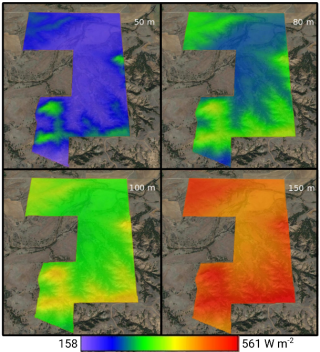Research field description: Cities are growing in all parts of the world and they are home to more than 50% of the world’s population. As such, urban environments face the challenge of maintaining and improving sustainable development and resilience to the projected impact of climate change and the increased occurrence of severe weather. While urban sustainability focuses on meeting the needs of the current generation of urban dwellers without compromising the opportunity of future generations to meet their needs, urban resilience addresses the capacity of all constituting members of a society to adapt, survive, and recover from various (weather) hazards. The goal of modern societies and decision-makers from the local to the governmental levels should be towards achieving the highest possible level of sustainable development and resilience.
Both sustainability and resilience are often multidisciplinary—researchers from different disciplines working together—and interdisciplinary—applying methods from different disciplines—research fields in which atmospheric sciences and oceanography play a major role. A few examples of practical applications of atmospheric sciences to sustainability and resilience are wind and solar resource assessment in the energy sectors, severe weather risk assessment in the insurance sector, wind engineering, and air & water quality assessment.
Associated faculty members are: Djordje Romanic, Parisa Ariya, Yi Huang
Sustainability: Wind is a clean and renewable source of energy. Because wind power is proportional to the cube of wind speed, small inaccuracies in measured or modelled wind speed translate into large errors in the evaluated wind power. Therefore, the accurate assessment of wind potential is a quintessential part of feasibility studies and consulting projects in the wind energy sector. Our faculty members are conducting research on wind resource assessment, dynamics of local winds, and performances of wind turbines under severe wind conditions. We also study urban boundary layers and their links to urban winds and GHG dispersion. Urban areas are also sites for most greenhouses gases, a significant source of anthropogenic airborne particles. As such, they are major sites for poor air quality that are identified to be determinantal to human health. We also study urban boundary layers and their links to urban winds and GHG dispersion. For example, we use high-resolution atmospheric models and remote sensing techniques to understand the GHG distribution and variation driven by emission sources and influenced by meteorological conditions.

Figure: Wind power density at a specific site and four different heights above ground (Photo credit: D. Romanic)

Figure: CO2 column enhancements relative to background for a 3.75 ktCO2 h-1 (33 MtCO2 a-1) power plant plume simulated by LES at 300 m resolution. (a) shows the plume with 300 m pixel resolution and (b) shows the same plume but with pixel resolution degraded to 3000 m. The coefficient of determination (R2 measures the ability to fit each LES plume to a Gaussian form. (Varon et al., Atmos. Meas. Tech., https://doi.org/10.5194/amt-11-5673-2018) (Photo credit: Y. Huang)
Resilience: The increasing frequency of severe weather (e.g., high winds, droughts, floods, etc.) requires more research on the resilience of modern communities to high-impact weather. For example, recent research has shown that the major wind damage to Canadian communities in Quebec and Ontario was caused by convective storms, followed by winter storms and tornadoes. For instance, the importance of atmospheric science research on urban resilience is depicted in the figure below. The analysis shows the sensitivity of Monte Carlo simulations—a simulation approach widely used in the insurance sector—to the choice of an analytical model of the tangential tornado flow field.

Monte Carlo simulations of aggregated tornado losses to residential homes in Kansas for different return periods assuming tornado flow field obeys Rankine Vortex (RV) or Modified Rankine Vortex (MRV) models. (Photo credit: D. Romanic)